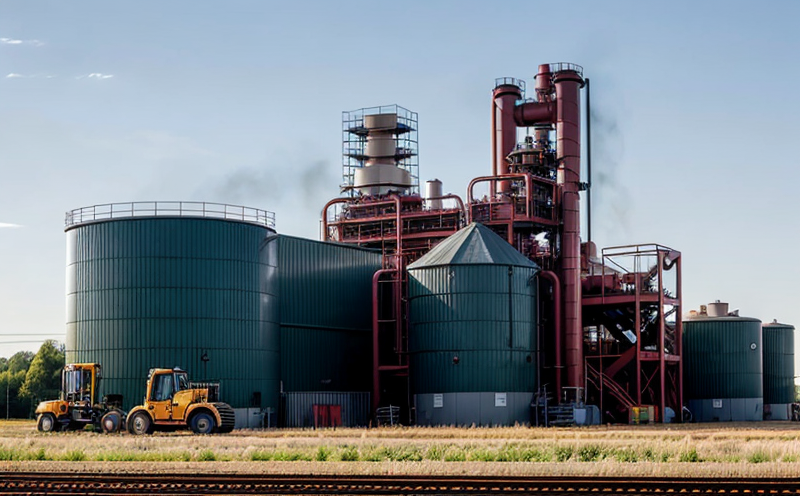ISO 8579-2 Gearbox Noise and Vibration Testing
The ISO 8579-2 standard provides a comprehensive framework for evaluating the noise and vibration characteristics of gearboxes. This service is essential for ensuring that machinery and industrial equipment meet stringent international standards, thereby enhancing reliability and performance in demanding environments.
ISO 8579-2 defines specific procedures and criteria to measure the sound power level generated by gearboxes under operating conditions. The test setup includes a controlled environment where the gearbox can simulate real-world operational scenarios accurately. This ensures that any noise or vibration issues are identified early, allowing for timely corrective actions.
The testing process typically involves several steps. First, the gearbox is mounted on a rigid stand to prevent external vibrations from influencing the measurement results. Then, a sound level meter with appropriate frequency weighting and integration time settings is used to capture the emitted noise levels. For vibration measurements, accelerometers are strategically placed on key components of the gearbox to monitor displacement, velocity, or acceleration.
The acceptance criteria for ISO 8579-2 testing include compliance with the specified sound power level limits defined in the standard. These limits vary based on factors such as the type and size of the gearbox, its intended application, and environmental conditions. Adhering to these standards helps manufacturers meet regulatory requirements and improve their products' reputation for quality.
Real-world applications of ISO 8579-2 testing are widespread across various industries, including automotive manufacturing, construction equipment, and power generation. By incorporating this service into the development and production processes, companies can ensure that their gearboxes operate efficiently while minimizing noise pollution and potential health risks to nearby personnel.
Quality managers and compliance officers play a crucial role in overseeing ISO 8579-2 testing. They must ensure that all test procedures are followed correctly and that accurate data is collected. R&D engineers benefit from this service by gaining insights into how design changes impact the gearbox's noise and vibration performance. Procurement teams can leverage these results to select suppliers who deliver high-quality, compliant gearboxes.
- Sound Power Level Measurement: Accurate measurement of sound power levels in a controlled environment.
- Vibration Analysis: Detailed analysis of vibrations using accelerometers and other sensors.
- Data Analysis: Comprehensive evaluation of test results against ISO 8579-2 criteria.
The benefits of adhering to ISO 8579-2 go beyond compliance; they contribute significantly to a company's reputation for reliability and innovation. By investing in this service, organizations can differentiate themselves in competitive markets while ensuring the safety and well-being of their workforce and surrounding communities.
Industry Applications
The ISO 8579-2 gearbox noise and vibration testing is particularly relevant for industries where precision and performance are critical. Automotive manufacturers, for instance, use this service to enhance the driving experience by reducing cabin noise levels. Construction equipment firms rely on it to build robust machines that can withstand harsh conditions without compromising safety or efficiency.
In the power generation sector, ISO 8579-2 testing helps ensure that turbines and generators operate quietly yet reliably. This is crucial for both urban areas where minimal noise pollution is desired and remote locations where equipment must function efficiently in challenging environments.
For industrial machinery manufacturers, this service ensures that their products meet rigorous international standards, enhancing brand reputation and customer satisfaction. By integrating ISO 8579-2 testing into their quality control processes, these companies can deliver superior performance and reliability to their customers.
Quality and Reliability Assurance
The ISO 8579-2 standard plays a vital role in maintaining high standards of quality and reliability. By adhering to the specified procedures for noise and vibration testing, manufacturers can identify potential issues early on, reducing costly rework or redesigns later in the product lifecycle.
- Early Issue Detection: Identification of noise and vibration issues during development stages.
- Cost Savings: Prevention of expensive rework by addressing problems upfront.
- Promoted Reliability: Enhanced confidence in the long-term performance of gearboxes.
The rigorous nature of ISO 8579-2 testing ensures that only products meeting strict criteria are released to market. This not only protects the reputation of manufacturers but also fosters trust among end-users, who can expect consistent quality and reliability from their purchases.
Compliance with this standard is essential for companies aiming to export their gearboxes internationally. Many countries have adopted ISO standards as part of their national regulations, ensuring that products meeting these criteria are recognized globally. This international recognition enhances the marketability of compliant products, providing a competitive edge in global markets.
Customer Impact and Satisfaction
The ISO 8579-2 gearbox noise and vibration testing has a direct impact on customer satisfaction by addressing two critical aspects: product performance and environmental considerations. For end-users of industrial machinery, reduced noise levels enhance the working environment, making tasks more comfortable and efficient.
From an environmental perspective, quieter gearboxes contribute to lower sound pollution in urban and industrial settings. This is particularly beneficial for communities near manufacturing facilities or construction sites where noise can be a significant issue. By minimizing noise emissions, manufacturers demonstrate their commitment to sustainable practices and community well-being.
The testing also ensures that gearboxes operate efficiently under various conditions, extending the lifespan of equipment and reducing maintenance costs over time. This translates into significant savings for both businesses and consumers, who benefit from longer-lasting products with lower operational expenses.
In summary, ISO 8579-2 gearbox noise and vibration testing is a crucial service that contributes to higher customer satisfaction by delivering reliable, efficient, and environmentally friendly products. Its importance cannot be overstated in today's competitive market where quality and sustainability are paramount.





